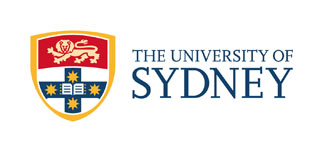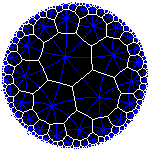 |
 |
AMSI Summer School 2012 at the University of New South Wales

According to Felix Klein's influential Erlanger program of 1872, geometry is the study of properties of a space, which are invariant under a group of transformations. In Klein's framework, the familiar Euclidean geometry consist of n-dimensional Euclidean space and its group of isometries. In general, a geometry is a pair (X, G), where X is a (sufficiently nice) space and G is a (sufficiently nice) group acting on the space. Geometric properties are precisely those that are preserved by the group. A geometry in Klein's sense may not allow the concepts of distance or angle; an example of this is affine geometry.
The study of geometry in Klein's framework motivates key ideas in different areas of mathematics, such as group theory, algebraic topology, differential geometry and representation theory. The seminal work of Bill Thurston has provided even more links between seemingly disparate fields of mathematics.
The aim of this course is to give students an introduction to geometry in the sense of Klein and Thurston, and to provide them with working knowledge of a variety of concepts and tools that are applicable in different fields of mathematics, as well as to open avenues for further study. A great emphasis will be placed on the detailed study of key examples.
The following materials were handed out in lectures. Please ask me for a copy if you don't have them:
Feel free to approach me during morning tea, or to look for me in room 4071 in
the Red Centre.
You can also make an appointment for consultation by e-mail.
Essential: A course in Multivariable Calculus and a course in Linear
Algebra.
Based on the background knowledge feedback, I will assume that you are
comfortable with the material from:
After week 1, read through all of 2.1-2.15, and all of 3.1-3.7.
These books are really enjoyable to read. They give nice introductions and contain excellent illustrations.
These geometry games by Jeffrey Weeks can help to gain some intuition about tilings, curvature and group actions:
You are especially encouraged to explore the hyperbolic games, and to go through the study questions, which are accessible through the games' help menu.
The assignments will be given out in the last lecture of each week.
The final exam is worth 50% of the final mark and covers material from the entire course.
The exam may include the following:
As to 6): If I ask you to prove something, it should be straight forward. For long or involved proofs that were covered in lectures, I don't expect you to know all the details, but rather to know the storyline, and the main points. For example, I expect you to know how and where the discontinuity of the action is used to show that the Dirichelet domain is locally finite (in the 2-d proof given in class). As another example, I expect you to know why Theorem 7.7 is true.
I'm listing below some exercises from the book that were either
given in lectures as explicit exercises, or include details that
were left for you to check, plus some additional problems.
You should also keep track of other
exercises that I set during lectures.
A number of books are on reserve in the library.
Please let me know if you have any problems or comments on the subject; both with regard to the contents and how it is run.